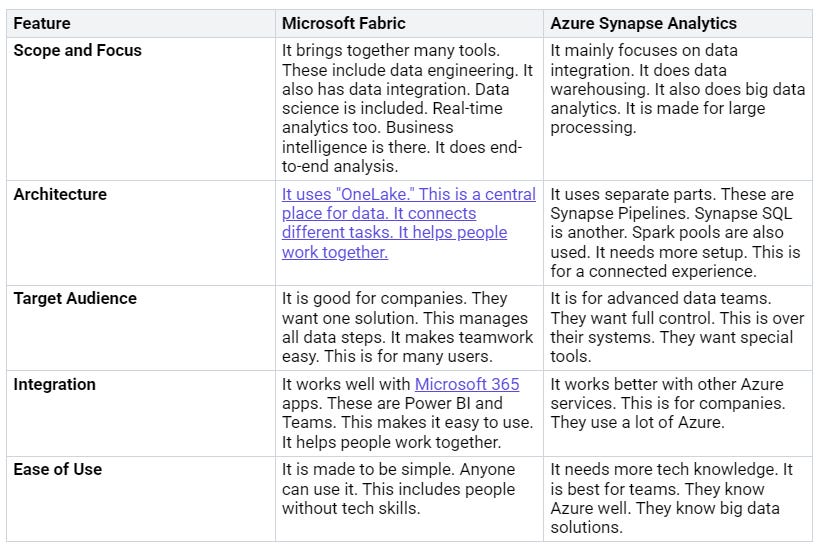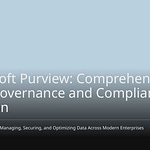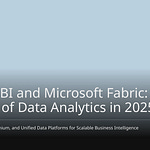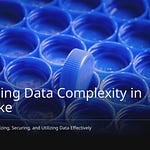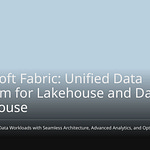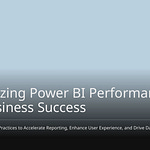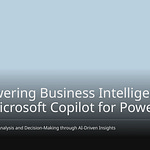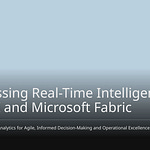Many people are asking: Is Microsoft Fabric replacing Synapse, or is it merely a rebranding? Microsoft Fabric is far more than just a new name for Azure Synapse Analytics; it represents a significant leap forward. It unifies Microsoft’s diverse data tools. Fabric integrates Synapse’s capabilities into a comprehensive platform. Fabric leverages OneLake, which simplifies usability and adheres to straightforward governance. It also requires minimal coding. While Synapse excels at complex tasks, Fabric’s Data Lakehouse offers a distinctly different approach.
Key Takeaways
Microsoft Fabric is a new system. It mixes many data tools. It is not just a new name for Azure Synapse Analytics.
Fabric joins tools like Power BI and Data Factory. It uses OneLake for all data. This makes data tasks simpler.
Some Synapse parts, like Data Explorer, go to Fabric. Other Synapse tools are now in Fabric’s features.
Fabric helps businesses save cash. It makes teams work better. It gives one spot for all data jobs.
Businesses can move old Synapse work to Fabric. Fabric is where Microsoft will put new data tools.
Understanding Microsoft Fabric
Microsoft Fabric is a complete platform. It handles data from start to finish. It brings together many tools. These include data integration and engineering. It also has data warehousing and data science. Real-time analytics and business intelligence are included. This platform makes data analysis easier. It works like a service you subscribe to. Fabric is a new kind of solution. It uses AI for smart insights. It can grow easily. It also saves money on analysis. It has many services. These move and process data. They also take in and change data. It routes real-time events. It builds reports too.
Fabric’s Core Components
Fabric combines several main parts. Power BI is a top tool. It makes reports and dashboards simple. Azure Data Factory is a cloud service. It automates data tasks. It moves and changes data. Data Activator is a new feature. It helps use data better. OneLake is a key part. It is an open hub. It brings data together. This data comes from many places. Fabric also has AI modeling. This stops data movement. It speeds up analysis. Microsoft 365 apps work well with it. This connects to Excel and Teams. Fabric Warehouse changes data warehousing. It mixes data lake size. It also has structured queries. Microsoft Purview helps manage data. It catalogs data. It also tracks where data comes from.
Fabric’s Unified Vision
Fabric’s single vision means no separate tools. It puts all data steps together. This happens in one place. This makes things run smoothly. OneLake is a single data lake. It is for the whole company. It stops data from being separate. It also stops data copying. It saves all data. This is in the open Delta Lake format. OneLake uses a zero-copy method. This is through virtualization. It uses shortcuts and mirroring. It also has built-in rules. Fabric has seven main parts. These include Data Factory. There is also Data Engineering. Data Warehousing is included. So is Data Science. Real-Time Analytics is there. Power BI and Data Activator too. They give one place for all data steps. All parts share a look. They share data info. They share security rules. This allows smooth changes. It tracks where data comes from. AI and Copilot are in Fabric. This allows natural language questions. It creates reports. It automates code. This combined way makes data better. It makes it easier to get. It gives a clear view of operations. This builds trust in insights. It makes them accurate and easy to get.
Synapse’s Role and Evolution in Fabric
Azure Synapse Analytics was a strong platform. It handled data warehousing. It also did big data analytics. Its goal was to be a “one-stop shop.” This was for all data tasks. Synapse used SQL for data warehousing. It used Spark for big data. Data Explorer handled logs. It also did time series analytics. Synapse had Pipelines. These were for data integration. They also did ETL/ELT processes. It was built on ADLS Gen2. This platform offered PaaS. This was for data warehousing. It also did integration and analytics. It was great at processing lots of data. It did real-time analytics. It managed data warehouses. Synapse Studio was a workspace. It built solutions. It managed security. It did data ingestion. It also did exploration and visualization.
Synapse Capabilities Within Fabric
Synapse’s main parts are now “experiences.” They are in Microsoft Fabric. For example, Synapse Data Engineering is a key experience. It is in Microsoft Fabric. Data engineers use Apache Spark. This is for data transformation. They build strong lakehouse designs. This includes a lakehouse. It is a main item. It mixes data lake and warehouse. It uses open formats. Delta Lake is one. This makes data easier to use. It also makes it easier to share. The lakehouse has a SQL endpoint. This is for data warehousing. It allows T-SQL queries. It also has views and functions. It includes a semantic dataset. This is for Power BI reports. It uses ‘Direct Lake’ mode.
Synapse SQL Pools are now in Fabric Data Warehouse. They are a SaaS item. They are in the Fabric workspace. They work on data in OneLake. They use the Delta format. This Fabric Data Warehouse is a SaaS solution. It is fully managed. It removes the need to set up resources. It uses serverless computing. Resources appear fast. This is when jobs start. This makes it efficient. You pay for what you use. It separates storage and compute. This allows them to grow separately. You pay for each. It uses open data standards. Delta-Parquet in OneLake is one. Data is not stuck in formats. This works with all Fabric tasks. It also works with Spark. No data movement is needed. It also allows cross-querying. Data in the lake can be queried. It can be joined. No copies are made. The system scales resources fast. It scales down when not used. No user action is needed. It optimizes itself. It finds workloads. It separates them. This gives steady performance. It has automatic caching. It also makes good query plans.
Synapse Spark is now in Fabric Data Engineering. This has integrated Notebooks. It has Lakehouse items. It has optimized Spark runtimes. All of this is in a SaaS environment. Microsoft Fabric Spark has new things. The Native Execution Engine (NEE) is one. This makes queries faster. It costs no extra. It also has Starter pools. These create Spark sessions fast. Unified security in the lakehouse provides RLS. It also provides CLS. Fabric Spark supports notebooks. These have import/export. They have UI settings. They have inline session settings. They have IntelliSense. It includes mssparkutils. This has getToken and getSecret support. Fabric notebooks have unique features. Notebook resources are one. This is a Unix-like file system. They have collaborative editing. They have high concurrency sessions. They also have scheduled run support.
Synapse Pipelines are now Data Factory in Fabric. This uses the same engine. It is like Azure Data Factory. But it has a new look. It is more integrated. It is in the Fabric workspace. This is for orchestration. This includes Dataflows Gen2. This is for scalable data transformation.
Azure Synapse Data Explorer Retirement
A clear example is Microsoft Fabric replacing Synapse parts. Azure Synapse Data Explorer is retiring. Azure Synapse Analytics Data Explorer (Preview) will retire. This happens on October 7, 2025. After this date, workloads will be deleted. Any related data will be lost. Microsoft suggests moving to Eventhouse. This is in Microsoft Fabric. Eventhouse in Microsoft Fabric replaces Azure Synapse Data Explorer. This part provides real-time analytics.
Existing Synapse Workspaces
Companies with Azure Synapse Analytics workspaces need to know the future. Microsoft Fabric is not just a new name. It is a big change. Microsoft Fabric replacing Synapse in some areas means companies should move. Fabric uses a lake-centric approach. It uses OneLake. It does not have dedicated SQL pools. It does not have relational storage. This is like Synapse. It also has a new user experience. It is based on Power BI. It is not Synapse Studio.
A full migration has steps. Companies must check their current setup. They define what to move. Then, they set up the Fabric Workspace. Stored procedures in Azure Synapse Analytics SQL pools can help. They move data warehousing tasks. For Spark-based tasks, there are many ways. It is important to check. Is Fabric Data Engineering the best? Some Spark features are still new. Or they are being tested. Moving offers benefits. A faster Spark engine is one. Smooth Power BI integration is another. It gives one place for tasks. This makes workflows easier. Automated cloud migration can also speed up this move.
Fabric vs. Synapse: Scope and Vision
Unified Platform vs. Analytics Service
Microsoft Fabric has a bigger plan. It covers everything. Azure Synapse Analytics is different. Fabric is a service you subscribe to. It handles all data steps. This goes from getting data to showing insights. Synapse focuses on data analysis. It does data warehousing. It also processes big data. Fabric wants to make data analysis simple. It offers one platform. It has one look. It has one set of rules. It also has one price.
Fabric uses OneLake. This is a central place for data. It connects different tasks. It helps people work together. Synapse uses separate parts. These are Synapse Pipelines. Synapse SQL is another. Spark pools are also used. This needs more setup. This is for a connected experience. Fabric is for companies. They want one solution. This manages all data steps. It makes teamwork easy. This is for many users. Synapse suits advanced data teams. They want full control. This is over their systems. They want special tools.
Fabric is a service you subscribe to. It is fully managed. It needs little setup. Synapse is a platform service. It gives users more control. But it needs more management. Fabric is easy to use. No IT knowledge is needed. Microsoft handles the setup. Synapse needs some tech understanding. This is for basic setup. Fabric changes processing power. It goes up or down. It does this automatically. Synapse needs admins to change settings. This is to scale. Fabric’s security is in the Microsoft cloud. OneSecurity manages access. Synapse uses role-based access. It also has row, column, and object security.
Fabric offers many features. It does data analysis. It also does data management. It combines many systems. It puts them in one solution. It works well with AI. This includes Azure OpenAI. This is for creating AI. Copilot is also included. This is for custom AI models. It helps with data flows. It also creates code. Fabric connects easily. It works with Microsoft tools. These are Dataverse. Azure Machine Learning is another. GitHub is included. Azure DevOps too. This full approach shows something. Microsoft Fabric is replacing Synapse. This is for end-to-end data solutions.
The Lakehouse Architecture
Microsoft Fabric has a Lakehouse. It is built-in. This combines data lake flexibility. It also has data warehouse speed. OneLake is the main storage. It holds huge amounts of data. It holds many data types. This central place gives one view. It allows real-time analysis. It reduces the need for many data stores.
Delta Tables create Lakehouse features. They offer transaction tools. These include ACID transactions. Data versioning is another. Schema evolution is also there. The Delta Lake format ensures ACID rules. It ensures consistent transactions. It has features like time travel. It also enforces schema. Direct Lake Mode queries data. It is in OneLake storage. It allows instant queries. No database imports are needed. This means fast queries. No traditional ETL is needed. It offers faster analysis. It is more cost-efficient. A SQL Analytics Endpoint queries data directly. It uses familiar T-SQL. This is for fast analysis.
The Lakehouse in Microsoft Fabric improves data rules. It also improves data quality. It has strong security. It has governance tools. OneLake is one such tool. This ensures data quality. It controls access. It helps companies follow rules. It stops unauthorized access. It also makes data reliable. It makes it auditable. It removes separate data. It helps people work together. The metadata layer helps data quality. It lists data assets. It keeps schema info. This gives context. It gives structure to data teams. This is key for good queries. It is key for good insights. The Medallion Lakehouse is a design. It refines data. It uses layers. These are Bronze, Silver, Gold. This process improves data. It improves quality. It improves usability. It fixes the ‘data swamp’ problem. It creates one ‘source of truth’. This is for analysis.
Migration Paths and Tools
Microsoft Fabric has a new ‘migrate’ feature. It converts Synapse Data Warehouse assets. It turns them into Fabric Data Warehouse assets. But customers do not have to move now. They do not have to move from Azure Synapse Analytics. They do not have to move to Microsoft Fabric. Companies can choose when to move.
Many tools help with this move. The Fabric Copy Data Tool moves data fast. It moves data from Synapse SQL pools. It also moves data from other sources. It moves it into the Fabric Lakehouse. Microsoft offers Fabric Migration Tools. These are in the Fabric portal. They are also external. They check the Synapse environment. They measure how hard the move is. Fabric’s Query Insights helps improve speed. It fixes slow queries. OneLake Shortcuts create virtual access. This is to existing ADLS Gen2 data. No physical move is needed first. This connects the two platforms. Fabric Data Factory Pipelines help rebuild. They rebuild orchestration pipelines from Synapse. Fabric Git Integration supports CI/CD. It supports DevOps. It allows version control. It allows strong testing. It allows automated deployment. It allows easy rollbacks. This is for notebooks. It is for dataflows. It is for semantic models. Microsoft Fabric Consulting Partners can help. They offer advice on capacity. They help with T-SQL changes. They help with governance rules.
Moving data pipelines needs skill. This is from Azure Synapse to Microsoft Fabric. This lowers risks. Risks like long downtime. Risks like data loss. Risks like budget overruns. Risks like slow performance. Knowing the source system well is key. It helps get data correctly. It helps understand business logic. It helps find dependencies. It helps plan schema conversion. Knowing the target platform is vital. This is Azure Synapse or Fabric. It helps use Fabric or Synapse well. It helps design a good target system. Data migration skill is important. It moves and changes data well. It does this accurately.
For Spark pipeline tasks, if Azure Synapse pipelines have notebooks. Or if they have Spark job definitions. These pipelines must move. They move to Data Factory pipelines in Fabric. They point to the target notebooks. The notebook task is in Data Factory pipelines. It is in Fabric. A four-phase plan is suggested. This includes Assessment and Planning. Fabric Setup and Proof of Concept is next. Data Migration is another. Workload Migration is the last. This plan ensures a smooth move to Fabric.
The Future: Fabric as the Path Forward
Innovation Focus on Fabric
Microsoft will put money into Fabric. This means new tools for users. For example, the Fabric VS Code extension is out. It helps manage things. It also works with Git. The Fabric CLI is now open. Developers can use it fast. Other tools are the Fabric Extensibility Toolkit. The Fabric MCP helps with AI code.
Microsoft also added new rules. The Govern tab is now ready. It makes data safer in OneLake. Purview policies are also ready. They help with rules like HIPAA. Fabric also has new AI tools. They summarize text. They also create text. It can find strange things. This needs no code. These new things show something. Microsoft wants Fabric to be great.
Benefits for Organizations
Companies using Fabric get many good things. They spend less on running things. They also pay less overall. This is because of one bill. Teams work together better.
New ETL tools in Fabric help developers. Their work gets 25-30% faster. Data processing can be 67-75% faster. This is with cloud ETL tools. Fabric lowers costs. It puts many tools together. These include data lakes and warehouses. It also includes analytics. This saves money on licenses. It also saves on equipment. Management is simpler.
Microsoft Fabric’s billing is simple. It gives one bill. This saves time. It saves time on contracts. It also saves time on money tasks. It has a flexible plan. This helps companies use it best. It helps them know costs. Fabric’s price is clear. It can grow. It is flexible. It costs less than many tools.
Microsoft Fabric offers a streamlined solution to this problem, unifying data management and analytics under a single platform. By consolidating these functions under one roof, Fabric enables seamless collaboration and data sharing across business and data functions that previously operated in silos. Not only can the many business and data functions that frequently work with the same data now use the same platform for their work, but they can also easily share their work product or results.
Fabric helps different teams work together.
Users can share data. They can share reports. This is through workspaces. They can give roles. Roles like owner or viewer.
They can share links. They can share with everyone. They can share with specific people.
Cross-tenant sharing allows data sharing. This is between companies. No data copying is needed.
Fabric also makes data safer. It follows rules.
It works with Microsoft security. It meets rules like GDPR. It meets rules like HIPAA.
It uses Purview. This helps sort data. It helps protect data.
It controls who sees data. This is very specific.
It records who uses data. It records changes. This helps check things.
Microsoft Fabric is not just a new name. It is more than that. It is a big step forward. It brings together Microsoft’s data tools. Fabric uses Synapse’s strong parts. It makes them better. It puts them in one platform. This platform is a service. It also replaces some parts. Azure Synapse Data Explorer is one. Fabric makes data work easier. It makes it faster. It is Microsoft’s future for data. Companies will see Fabric as important. People are talking about it. They say Microsoft Fabric is replacing Synapse.
FAQ
Is Microsoft Fabric just a new name for Azure Synapse Analytics?
No, Microsoft Fabric is not just a new name. It is a big change. Fabric puts Synapse’s tools together. It makes one big platform. It has new features. It has a different design. Fabric wants to make data analysis easy.
What about old Azure Synapse Analytics workspaces?
Old Azure Synapse Analytics workspaces still work. Microsoft does not make you move now. But Microsoft will put money into Fabric. Companies can move Synapse tools to Fabric. They can use new tools for this.
Does Fabric get rid of all Synapse parts?
Fabric uses many Synapse parts. They are now “experiences.” For example, Synapse Data Explorer will go away. Fabric’s real-time analysis takes its place. Other main parts, like Spark and SQL, are now in Fabric.
What is good about Fabric compared to Synapse?
Fabric is one complete platform. It handles all data steps. This saves work. It also costs less money. Fabric helps people work together. It gives one easy way to use it.
Will Microsoft still help Azure Synapse Analytics?
Microsoft will still help Azure Synapse Analytics. But new ideas will mostly be in Fabric. Companies should think about Fabric for new data projects.


